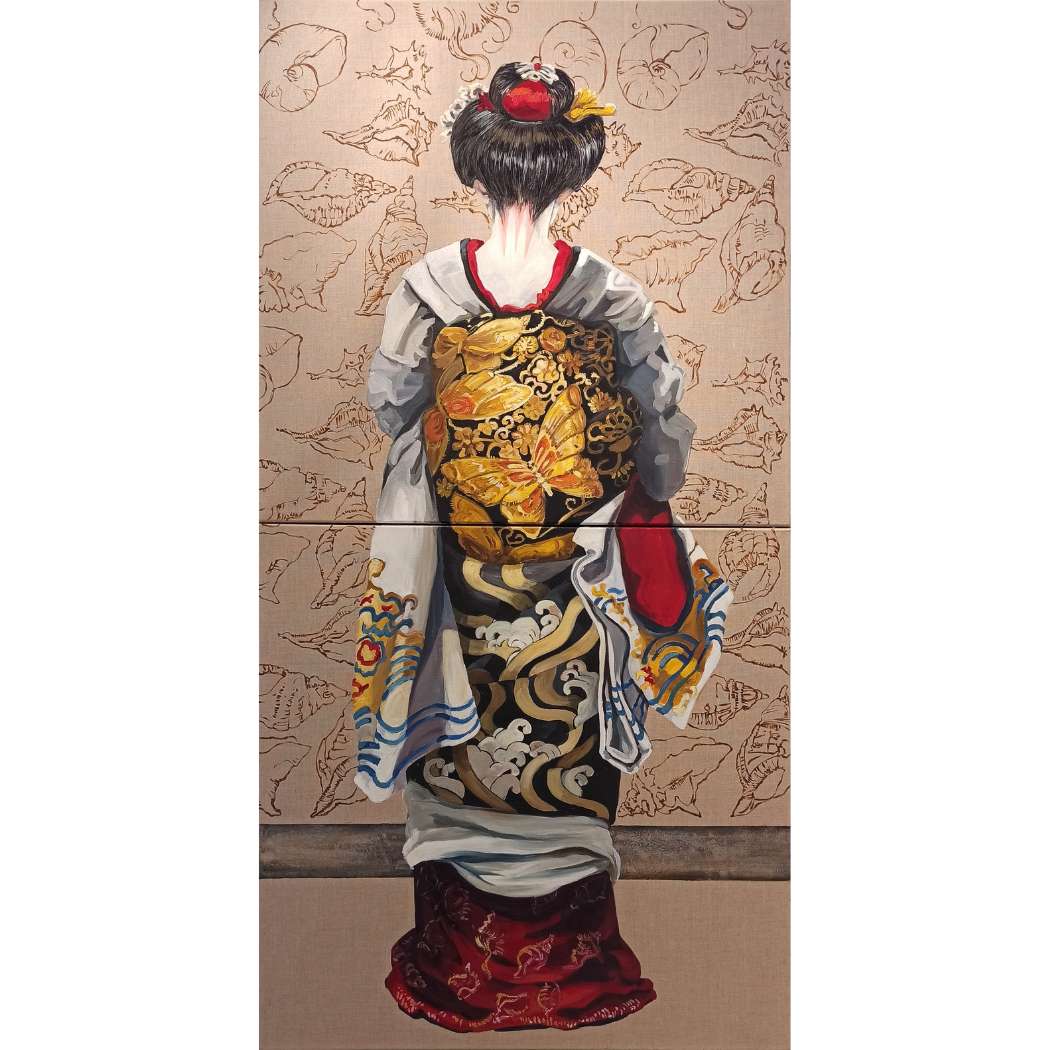Le figure di Benedetta Debenedetti non guardano mai negli occhi lo spettatore: raramente si lasciano ammirare nei tratti del volto, più spesso sono rappresentate di profilo o di spalle. L’impossibilità di incrociarne lo sguardo ci impedisce solo apparentemente di varcarne l’intimità, è infatti uno spazio molto più privato quello cui abbiamo accesso, al seguito degli enigmatici bianchissimi colli di Geisha o perdendoci tra le pieghe dei loro sontuosi kimono.
In quest’opera preziosissime stoffe avvolgono la candida sinuosità di un corpo anonimo facendosi tutt’uno con il sabbioso fondo di lino. Le conchiglie attentamente delineate di una spiaggia astratta sono raccolte nel rosso carminio della veste, per risuonare tra le pieghe della stessa, trasportate da brevi onde schiumose. Nessuna caratterizzazione invade e interrompe l’armonia di questa eleganza: la donna senza volto guarda di fronte a sé, forte e fiera anche in quell’identità che la tradizione le ha cucito addosso.
Benedetta Debenedetti’s figures never look the viewer in the eye: they rarely let us admire their faces, more often they are depicted in profile or from behind. The impossibility of meeting their gaze only apparently prevents us from crossing their intimacy; it is in fact a much more private space that we have access to, following the enigmatic white necks of the Geisha, losing ourselves in the folds of their sumptuous kimonos.
In this painting, precious fabrics envelop the white sinuosity of an anonymous body, becoming one with the sandy linen background. The carefully outlined shells of an abstract beach are gathered in the carmine red of the dress, to resonate between its folds, carried by short foamy waves. No characterisation invades and interrupts the harmony of that elegance: the woman without a face looks on, strong and proud even in that identity that tradition has sewn on her.

